Inside the Kitchens of Cinque Terre – Italy's Secret Foodie Haven
15 Best Pasta Dishes in The World
Trying to whittle down the best pasta dishes in the world is like trying to pick a favorite child – almost impossible. There are the big hitters like ragù alla bolognese and the famed Roman four, as well as countless regional dishes from little-known corners of Italy like the medeival corzetti from Liguria. There’s even Sardinia’s legendary (and almost extinct) su filindeu meaning “the threads of God”, an angel-hair pasta where the dough is stretched, folded, and looped exactly 256 times.
After much thought, we managed to pick 15 of the best pasta dishes, from world-famous favorites to humble recipes passed down through generations.
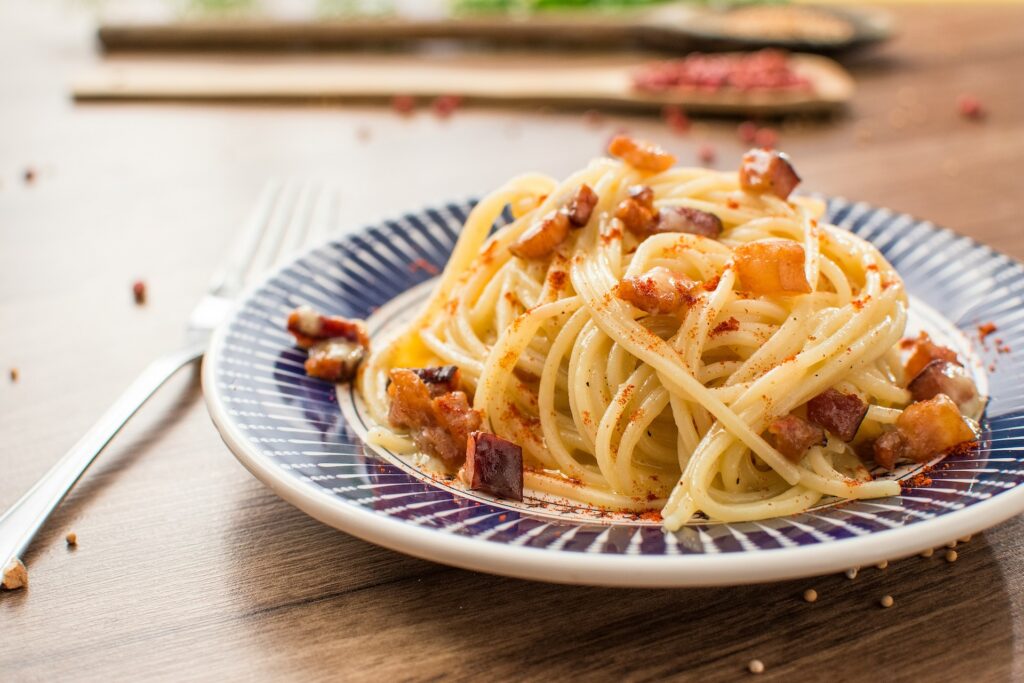
1. Carbonara
Traditionally made with spaghetti, carbonara is a classic dish made with just four ingredients: egg yolks, crispy guanciale (pork cheek), Pecorino Romano cheese, and freshly ground black pepper. Throw in some pasta water, and you have yourself a creamy, salty, moreish sauce (which doesn’t contain any actual cream, contrary to popular belief).
As with many of the best pasta dishes, the exact origins are murky – but many believe that, as its name comes from the word carbonaro, meaning ‘coal burner’, that carbonara was created to sustain the charcoal workers. Others believe that the name refers to the fiery heat of the ground black pepper in the dish, which also looks like coal dust.
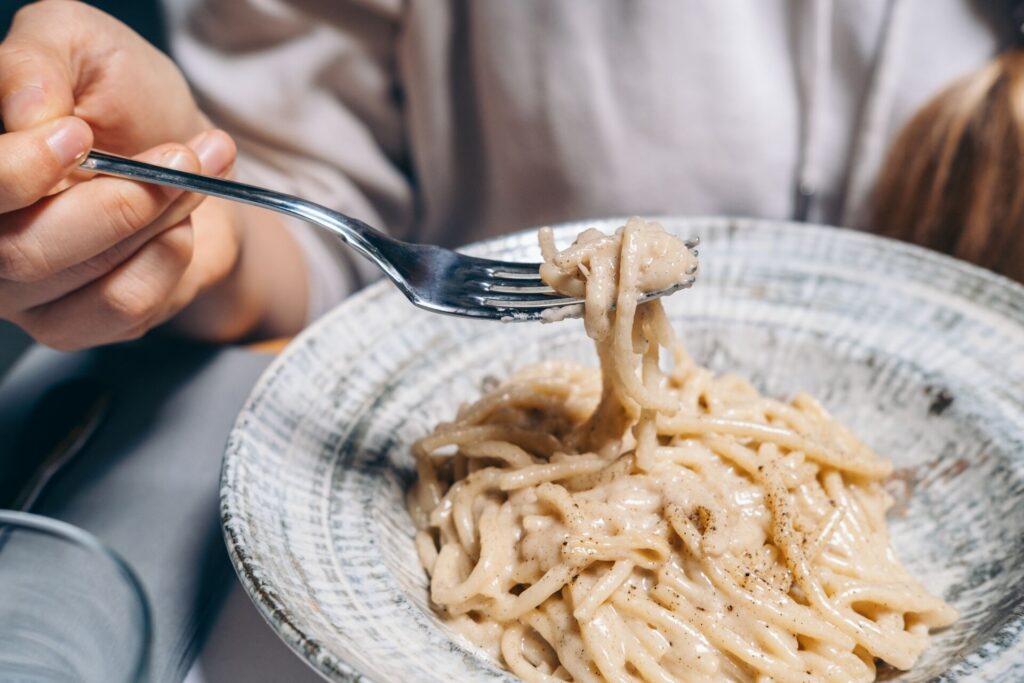
2. Cacio e Pepe
Three humble ingredients become more than the sum of their parts to create one of the best pasta dishes: Cacio e Pepe. Translating directly from Romanesco as ‘cheese and pepper’, the Roman pasta is made with sheep’s milk cheese (like pecorino) and black pepper, mixed with long pasta and lots of pasta water to make a rich, creamy, tangy sauce. It’s common these days to see it made with spaghetti, though traditionally the recipe would call for tonnarelli made with egg.
This is a hearty dish that allegedly first appeared centuries ago in the Apennine Mountains, where hard-working shepherds would have to keep long stores of dried pasta and black pepper – they had plenty of cheese on hand from their flocks. However, alternative (and less romantic) theories suggest that a dish like this would have fed hungry families who lived near the mines and factories that once surrounded the Lazio region encompassing Rome.
Wherever it originated, Cacio e Pepe is now a world-famous dish: in Season 6, Episode 20 of No Reservations, the late Anthony Bourdain even said it “could be the greatest thing in the history of the world”.

3. Trofie al Pesto
Now a staple of hungry students, pesto was first created in Liguria, its full name being pesto alla Genovese after Genoa, Liguria’s capital city. Pesto was traditionally with basil, garlic, extra virgin olive oil, parmesan cheese, pecorino cheese and pine nuts, ground up using a pestle and mortar.
With spaghetti is often the default way to serve this green, summery sauce, but back in Liguria trofie is the only shape that is served with pesto. The short, twisted pasta is only produced in Liguria and was first made in the 19th century, believed to have been created by housewives who used the leftover dough from making other pasta shapes.
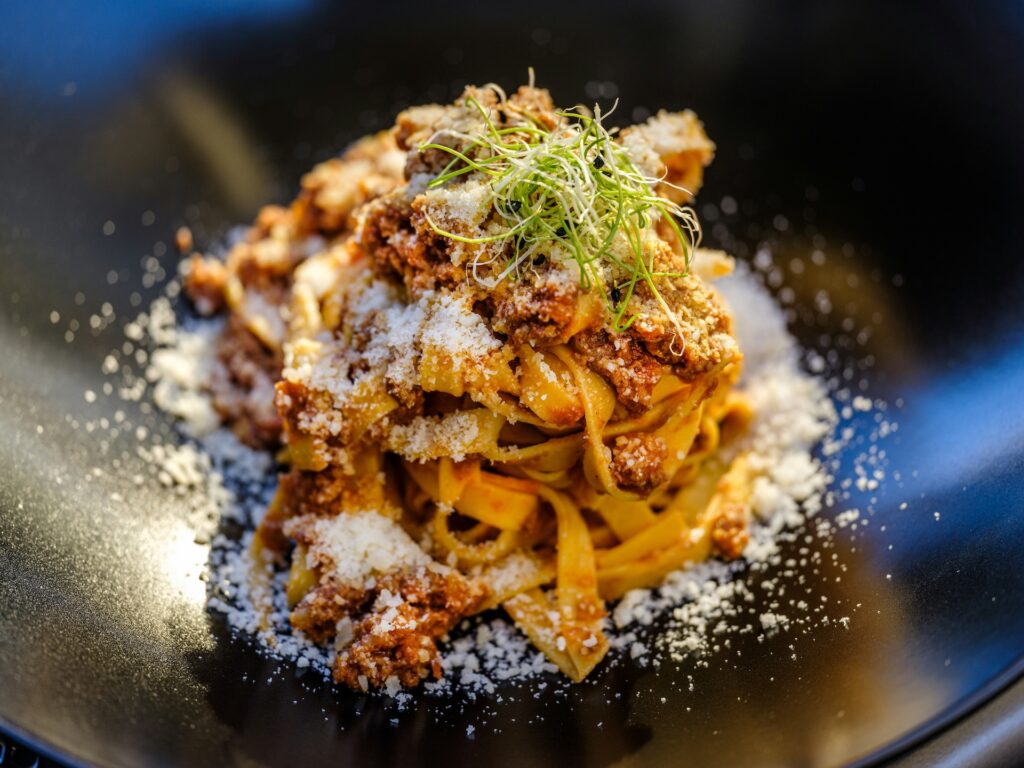
4. Ragù Bolognese
Italian food is synonymous with pasta and ragù bolognese is one of the most famous pasta dishes, it actually has its roots in 1600s Renaissance France. The origin of the word ragù is thought to be linked to the French word “ragout“, used to describe a stew of meat and vegetables cooked over a long time.
The ragù made its debut in Naples, but ragù alla Bolognese is from Bologna, the difference being that Bolognese uses mince meat rather than whole cuts, as is the Neapolitan style. There is in fact an ‘official’ recipe, the ‘Ragù Classico Bolognese’, which was submitted to the Bologna Chamber of Commerce on 17 October 1982 by the Bologna delegation of the Accademia Italiana della Cucina (an organisation dedicated to preserving Italy’s culinary heritage).
Tomatoes weren’t readily available in Italy until the late 1700s, and it wasn’t until the 20th century, with the spread of tomato sauce and pasta, that this pasta recipe became the ragù that we cook and love today.
DISCOVER MORE ON
5. Amatriciana
Another of the Roman pastas, there is an official Amatriciana recipe according to officials in Amatrice: guanciale (pork jowl), pecorino cheese, white wine, tomatoes from San Marzano, pepper and chilli.
Amatrice is a small town in the province of Rieti, in the Lazio region of Central Italy, and it’s thought that Amatriciana originated in a similar way to Cacio e Pepe – when shepherds were working in the hills overlooking the town, they used to bring cheese and pieces of pork jowl with them during long stays away from home. They made fresh pasta using flour and water (no egg!), wrapping the dough around a piece of wire to form a tubular shape that is still used today: bucatini.
You might be wondering where the tomato and chilli are in the shepherds’ version. The original recipe is now known as white amatriciana, as it was only at the end of the 1700s that tomato and chilli were imported from American and added to the dish to create the modern version.
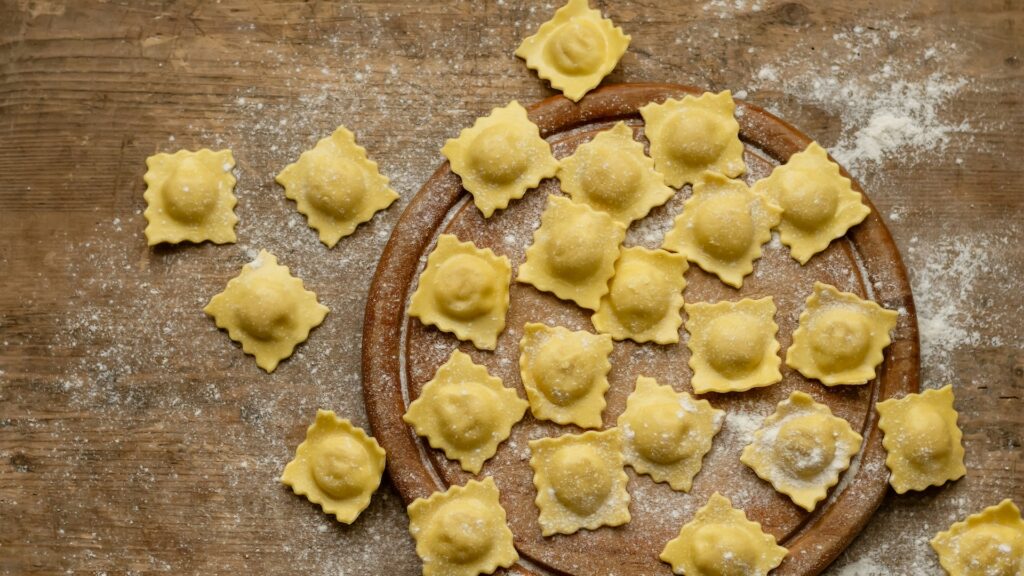
6. Ravioli
Stuffed pasta like ravioli first appeared in Italy in the 1500s, and first mentioned in the 14th century in the letters of Francesco Datini, a merchant of Prato (though he was not the inventor of ravioli), suggesting that the pasta was around before it was recorded.
Legend has it a cook named Ravioli (a surname you’ll still find in Italy) was the dish’s creator. It’s also thought that ravioli was a favorite of aristocratic courts in Milan, which then trickled down into regular Italian society. This explains why, for many Italians, ravioli remains a special dish – to mark occasions like Christmas or family celebrations, many Italians will bring out traditional fillings like pumpkin and almond biscuits (ravioli di zucca e amaretti).
7. Spaghetti all’Assassina
The best pasta dishes often have murky origins, but Spaghetti all’Assassina (‘assassin’s spaghetti’) bucks the trend with a tangible time and place where it was invented: in the early 1960s in the coastal city of Bari, Puglia at a restaurant called Al Sorso Preferito.
The restaurant regularly made a dish of spaghetti, tomatoes and dried chilli – but on one occasion, it burned on the bottom of the pan. Rather than throw it out the chefs ate it and found the crunchy pieces of burnt spaghetti were particularly delicious. The ‘assasin’ in the name refers to how the pasta is “assassinated” in the pan, toasted and infused with tomato sauce and chilli.
Save up to $3,000* per couple on your first Premium Tour
Plus receive latest offers, travel inspiration, and discover how your travels will make a positive impact. Together, WE MAKE TRAVEL MATTER®. Subscribe Now8. Pasta e Ceci
Though it’s not particularly flashy, Pasta e Ceci is still one of the best pasta dishes thanks to its resourceful history. Dating back nearly 2,000 years, it’s a specialty of Central and Southern Italy, particularly in Rome. Its name simply means ‘pasta with chickpeas’, and it was a pantry staple among poorer residents.
Nourishing and hearty, this is a brothy recipe that sits somewhere between a stew and a pasta sauce. It traditionally uses maltagliati pasta, made from leftover dough scraps, or cannolicchi, a short tube pasta that holds sauces extremely well.
There are different variations across Italy, but the Roman version adds salted anchovies and a few sprigs of rosemary to the sauce – but if you’re looking for pasta ideas, do as the Italians do and use whatever is in your pantry.
9. Pasta alla Gricia
Pasta alla Gricia possibly the oldest Roman pasta dish, dating as far back as 400 AD. It’s made with guanciale (cured pork jowl), Pecorino cheese, black pepper and pasta – rendering the fat of the guanciale is crucial, as it adds flavor and texture to this simple dish.
This is the precursor to most well-known Roman pastas but receives far less limelight. The addition of eggs creates Carbonara, while adding tomatoes gives you Amatriciana, and taking away the guanciale creates Cacio e Pepe – but we think Pasta alla Gricia is brilliant just as it is.
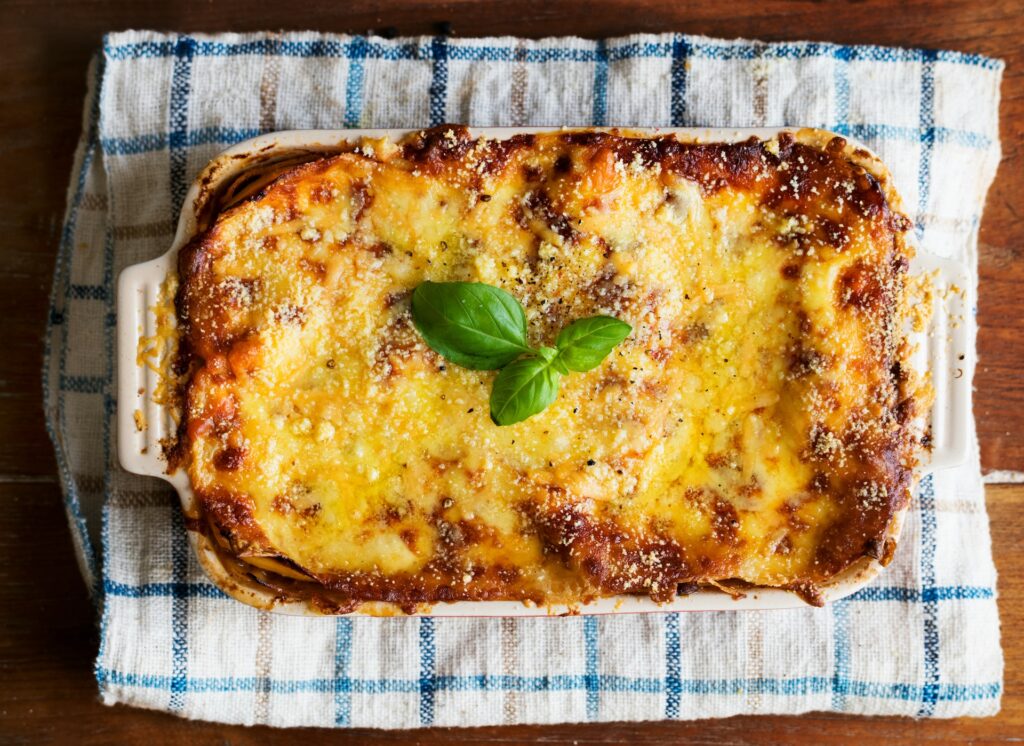
10. Lasagne
Pinpointing the origin of the lasagne is difficult; there are almost as many layers as in the beloved dish itself, though it’s widely agreed that this is an ancient pasta dish. It evolved through the ages, with archeological evidence of thin sheets of pasta dating back centuries, and 4th century BCE frescoes in the Tomba dei Rilievi (“Tomb of Reliefs”) in Lazio near Rome, showing diners enjoying a version of lasagna.
The ancient Roman cookbook De Re Coquinaria from 1 AD writes about a dish made from layers of dough, meat and cheese, though you have to wait until around the 14th century for a recipe that more closely resembles what we’d recognize as lasagne today – the 14th century cookbook ‘Liber de Coquina’ contains a dish of flattened dough, boiled and then sprinkled with cheese and spices.
While those from outside of Italy might only recognize one style of lasagna – with layers of ragù, béchamel and sheets of pasta – there are countless variations throughout the country. There’s northern Italy’s style with ricotta and mozzarella, sciabbó in Sicily made with pork ragú seasoned with dark chocolate, and even a sweet variation in the Dolomites with grated apples, dried fruit, nuts, and poppy seeds.
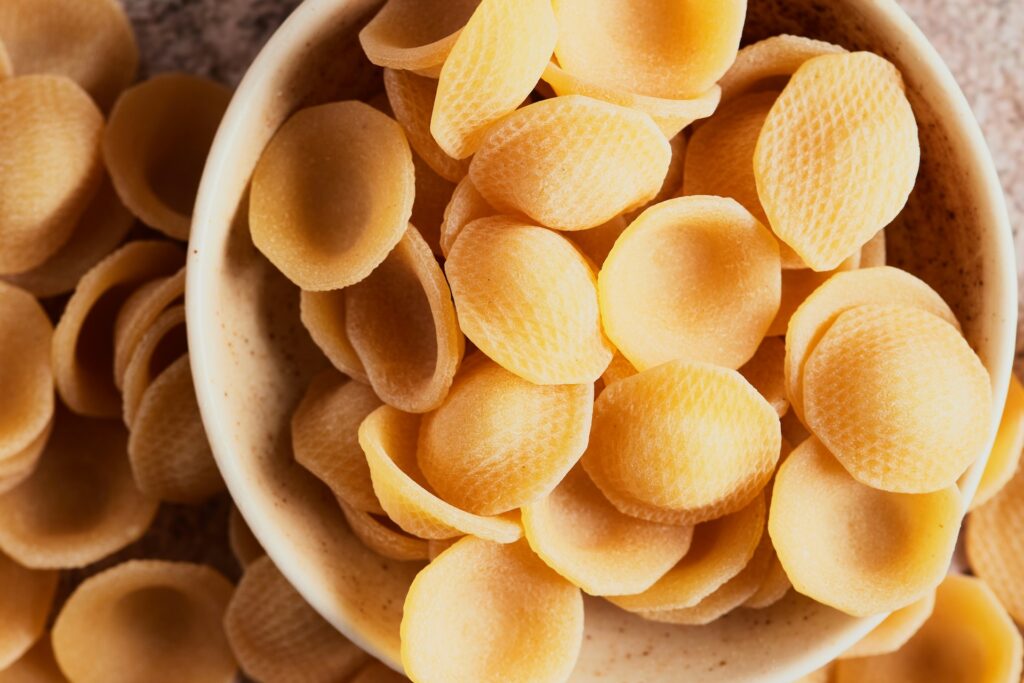
11. Orecchiette alle Cime di Rapa
This unique pasta comes straight from the heart of Puglia, “the breadbasket of Italy”. A historically poorer area meant that locals had to use inexpensive ingredients that were readily available; Orecchiette is made with fresh semolina-water dough, avoiding the use of expensive eggs.
Orecchiette alle cime di rapa translates as ‘orecchiette with turnip greens’, originating during the 12th and 13th centuries. Orecchiette means ‘little ears’, owing to the shape of the pasta which is always handmade. This is one of the few Italian pasta dishes that doesn’t feature cheese, again as aged cheese like Parmean or Pecorino would have been a luxury. Instead, it’s topped with toasted pangrattato, breadcrumbs made from leftover stale bread cooked in olive oil and sometimes herbs.
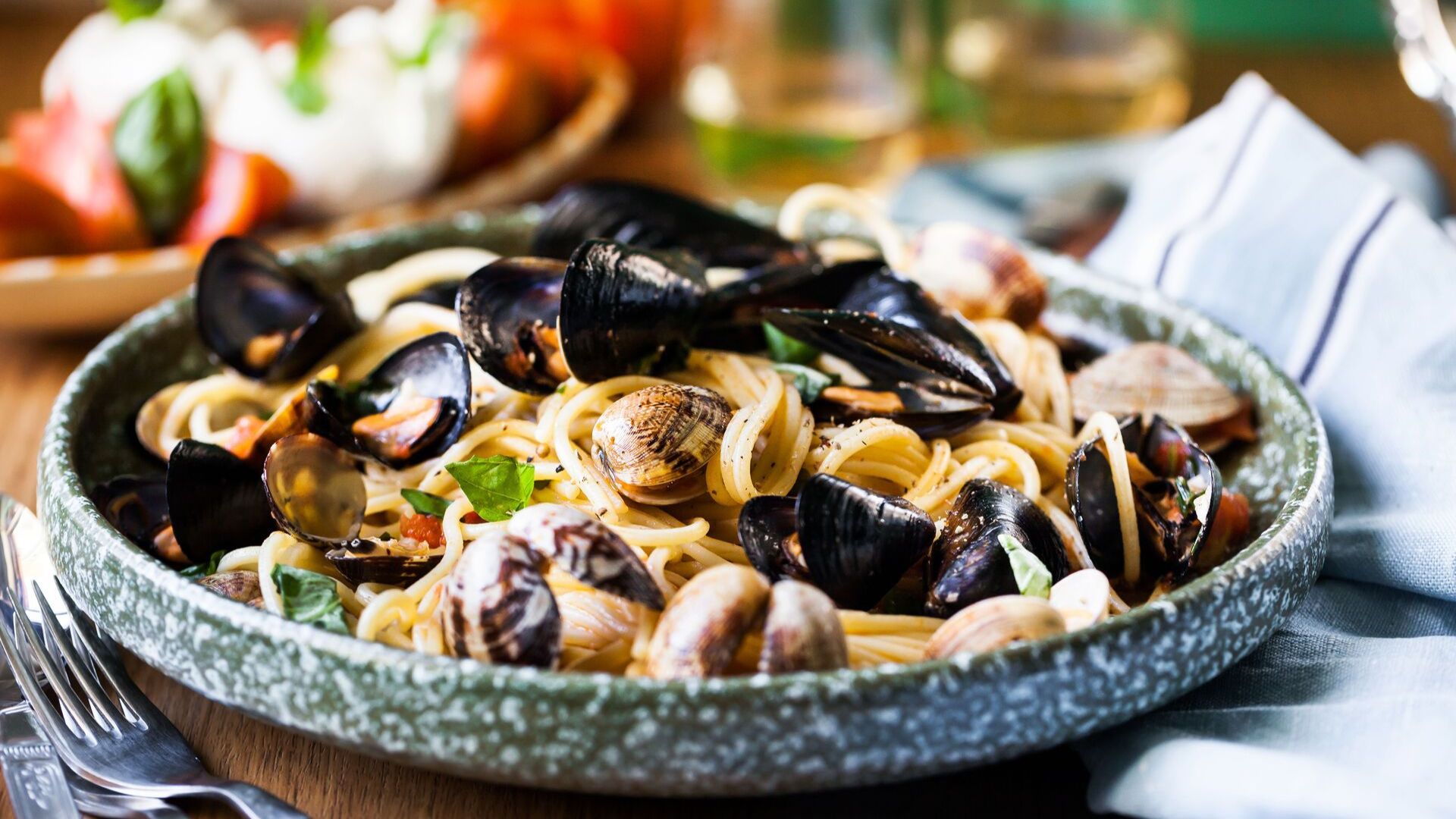
12. Spaghetti alle Vongole
An indisputably Neapolitan dish, spaghetti alle vongole is first recorded in 1839, when Ippolito Cavalcanti, the Duke of Buonvicino, included vermicelli all’olio con vongole in his cookbook the Cucina Teorico-pratica, written in Neapolitan. The recipe is almost unchanged: cook clams until they steam open and release their juices, add garlic, salt, pepper, and parsley, and add al dente pasta to finish cooking in the broth. However, Neapolitans had been eating brothy clam dishes long before pasta entered the equation in the 18th century.
Though this dish began in Naples there are now variants all over Italy, featuring linguine in the north in regions like Liguria.
13. Aglio e Olio
Sometimes the best pasta dishes are the most simple – now more commonly known as aglio, olio e peperoncino (garlic, oil and chilli), the original recipe only required two ingredients: garlic and oil, served with long pasta shapes like spaghetti or linguine. Believed to have originated in Naples, this simple dish was the pasta of the people, but it’s said that Ferdinand IV of Bourbon loved the dish so much that he created a new fork to eat it with – previously forks only had 2 tines, and he required one with 4 tines so he could eat his oily pasta without using his hands, which was common in those days.
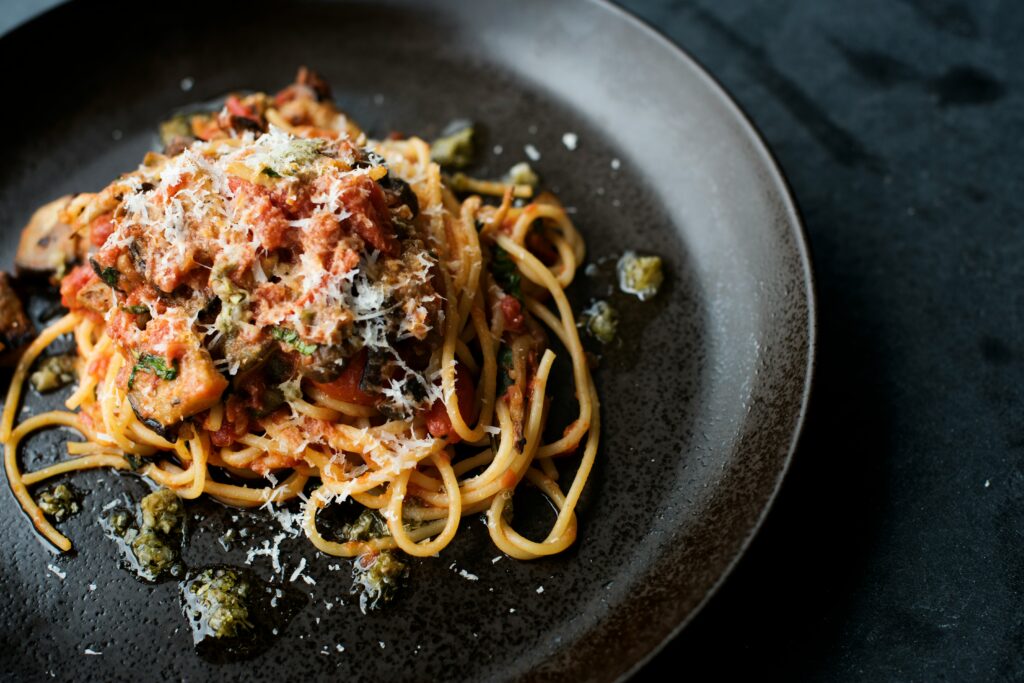
14. Pasta alla Norma
The history of Pasta alla Norma can be traced back to Catania, a bustling port city on the east coast of Sicily. Though he didn’t invent the dish, renowned 19th-century composer Vincenzo Bellini is highly intertwined with Norma’s story – allegedly he was served a pasta dish that he loved so much that he proclaimed it to be ‘Norma’, a term used by locals to describe something magnificent. The key ingredients are rooted in Sicilian farming traditions, made with tomatoes, eggplant (aubergine), basil, and ricotta salata cheese.
15. Spaghetti alla Nerano
A Sorrento coast classic, Spaghetti alla Nerano is made with fried zucchini (courgette) and Provolone del Monaco (a DOP cheese from the Sorrento peninsula). Another of the few dishes with a traceable history, it was created by Donna Rosa at her mother’s eponymous Maria Grazia restaurant in the seaside village of Nerano.
According to the family-run restaurant, Maria created Spaghetti alla Nerano in 1901, though the history of the restaurant goes back much further to the Middle Ages – sailors and fishermen would rest and recharge in the place where the restaurant currently stands.
What is the most popular pasta dish?
While each region has its own favorite, outside of Italy spaghetti Bolognese seems to be the most popular pasta dish – the hearty ragù captured our hearts and our tastebuds. Though make sure you serve it as they do in Bologna, with egg tagliatelle, which is the perfect shape for holding the heavier sauce.
What is Gordon Ramsay’s favorite pasta dish?
Gordon Ramsay’s favorite pasta dish is a simple and delicious “regular midweek family meal” according to the famed chef – it’s a creamy turkey and leek recipe that only takes around 10 minutes to make. Ground turkey, shallots, leek, garlic and heavy cream make up the sauce, which combined with penne or fusilli and topped with crispy sage breadcrumbs. If this Michelin-starred chef is a fan of easy pasta recipes, why shouldn’t we?
Ready to taste some of the best pasta dishes for yourself? Do it in style on one of our premium Italy tours.

LIKED THIS POST? SHARE WITH YOUR COMMUNITY



